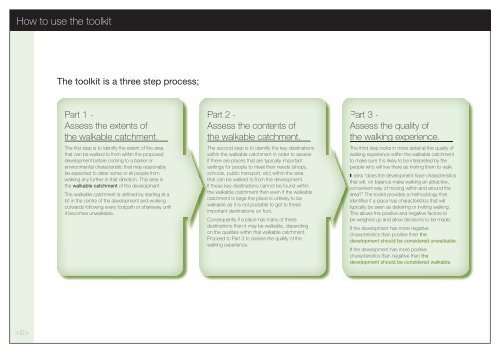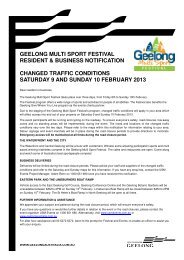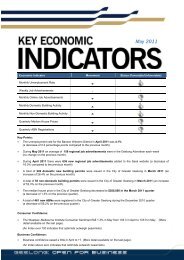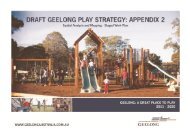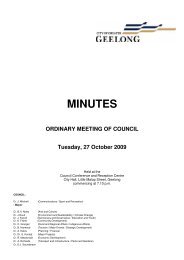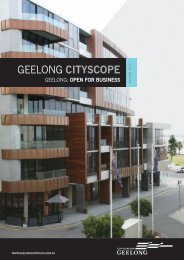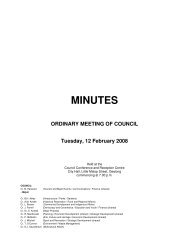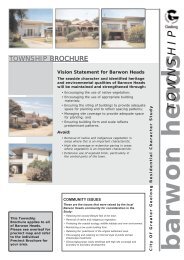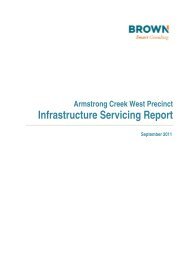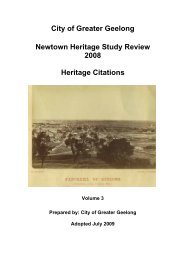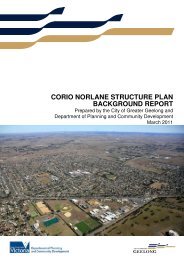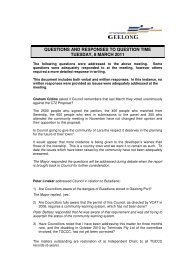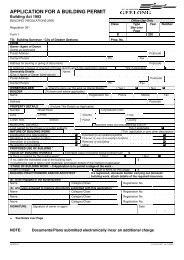Clause 56 Walkability Toolkit - City of Greater Geelong
Clause 56 Walkability Toolkit - City of Greater Geelong
Clause 56 Walkability Toolkit - City of Greater Geelong
Create successful ePaper yourself
Turn your PDF publications into a flip-book with our unique Google optimized e-Paper software.
How to use the toolkit<br />
The toolkit is a three step process;<br />
Part 1 -<br />
Assess the extents <strong>of</strong><br />
the walkable catchment.<br />
The first step is to identify the extent <strong>of</strong> the area<br />
that can be walked to from within the proposed<br />
development before coming to a barrier or<br />
environmental characteristic that may reasonably<br />
be expected to deter some or all people from<br />
walking any further in that direction. This area is<br />
the walkable catchment <strong>of</strong> the development.<br />
The walkable catchment is defined by starting at a<br />
lot in the centre <strong>of</strong> the development and working<br />
outwards following every footpath or shareway until<br />
it becomes unwalkable.<br />
Part 2 -<br />
Assess the contents <strong>of</strong><br />
the walkable catchment.<br />
The second step is to identify the key destinations<br />
within the walkable catchment in order to assess<br />
if there are places that are typically important<br />
settings for people to meet their needs (shops,<br />
schools, public transport, etc) within the area<br />
that can be walked to from the development.<br />
If these key destinations cannot be found within<br />
the walkable catchment then even if the walkable<br />
catchment is large the place is unlikely to be<br />
walkable as it is not possible to get to these<br />
important destinations on foot.<br />
Consequently if a place has many <strong>of</strong> these<br />
destinations then it may be walkable, depending<br />
on the qualities within that walkable catchment.<br />
Proceed to Part 3 to assess the quality <strong>of</strong> the<br />
walking experience.<br />
Part 3 -<br />
Assess the quality <strong>of</strong><br />
the walking experience.<br />
The third step looks in more detail at the quality <strong>of</strong><br />
walking experience within the walkable catchment<br />
to make sure it is likely to be interpreted by the<br />
people who will live there as inviting them to walk.<br />
It asks “does the development have characteristics<br />
that will, on balance make walking an attractive,<br />
convenient way <strong>of</strong> moving within and around the<br />
area?” The toolkit provides a methodology that<br />
identifies if a place has characteristics that will<br />
typically be seen as deterring or inviting walking.<br />
This allows the positive and negative factors to<br />
be weighed up and allow decisions to be made;<br />
If the development has more negative<br />
characteristics than positive then the<br />
development should be considered unwalkable.<br />
If the development has more positive<br />
characteristics than negative then the<br />
development should be considered walkable.<br />


